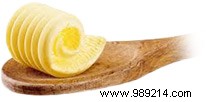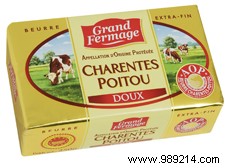
Since the creation of the Appellation d'origine contrôlée, then of its European equivalent of protected designations of origin (AOP), much has been said about the French cheeses which have benefited from this denomination. PDO butter has therefore been somewhat forgotten, yet it is an important reference to a notion of local products.
If France is famous in the world, it is thanks to the richness of its gastronomy, but also to the diversity of its local products. Between wines, champagnes, ciders, onions, cheeses or charcuterie, to name but a few… The other European countries just have to behave themselves. Nevertheless, today, I am particularly interested in PDO butter. Particularly those made in Isigny. Indeed, they were the very first French butters to obtain the AOP (AOC in 1986).
A well-deserved gratification knowing that their excellent reputation dates back to the eighteenth century. And if this butter is so tasty, it is because the pastures of the dairy cows are located by the sea, thus giving the milk its particular taste. Easily recognizable thanks to their golden yellow color, these butters are made in the departments of Manche and Calvados.

Of the three PDOs, however, I have a slight preference for Charentes-Poitou butters. Their particularity? The milk involved in their production is mainly harvested from farms located in this region, as well as in Haute-Vienne and Vendée. Its Appellation d'Origine Contrôlée dates back to the end of the 1970s (1979), and the AOP was granted to it in 2009.
For years, the know-how has been passed down from generation to generation and is still strictly respected today. As for its exceptionally creamy texture, it is obtained thanks to its manufacturing process. The milk is first skimmed before entering a very long process of maturation of the cream which lasts at least fifteen hours. Subsequently, the paste is kneaded during churning, thus obtaining a paste that is both homogeneous and smooth. With its slightly fruity taste, I mainly use Charentes-Poitou PDO unsalted butters for my pastries and puff pastry.
Bresse butter comes in last place since its AOP was only awarded to it in 2014 with the cream of the same name, after the AOC in 2012. To tell you the truth, used to the other two, I have not yet tried this dairy product. However, I only have positive feedback. Hazelnut, herbaceous or floral note... Depending on its production area (Ain, Saône-et-Loire and Jura), this butter would be very aromatic.
And its originality undoubtedly lies in its color which would vary according to the seasons. Dark yellow in spring and autumn, otherwise lighter during winter periods. Particularly supple and tender, this AOP butter spreads very easily and finds its place in sandwiches and breakfast sandwiches. Otherwise, this dairy product also offers a very good resistance to cooking.